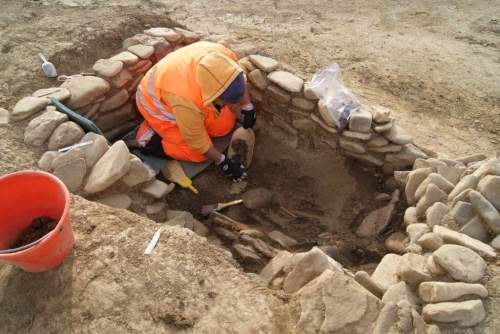MiBACT opposes the League's amendment: it is against the Cultural Heritage Code
The Ministry of Cultural Heritage, through the General Directorate of Archaeology, Fine Arts and Landscape, has even moved to prevent the approval of an amendment to the Milleproroghe decree (Decree-Law No. 183 of Dec. 31, 2020) that, if it comes into force, will cause quite a few problems: first, it will limit preventive archaeology work on construction sites, and second, it risks blocking work already begun as soon as there are finds.
The amendment bears the signature of a group of parliamentarians from the Lega - Salvini Premier group (Silvana Andreina Comaroli, Massimo Garavaglia, Giuseppe Ercole Bellachioma, Claudio Borghi, Vanessa Cattoi, Emanuele Cestari, Rebecca Frassini, Vannia Gava, and Paolo Paternoster) and calls for “for the implementation of contracts governed by Legislative Decree April 18, 2016 no. 50, whose works have not been started on the date of entry into force of this provision and until the date of December 31, 2025, the prior verification of archaeological interest, referred to in Article 25 paragraph 1 of, Legislative Decree April 18, 2016 No. 50, is required only for areas subject to specific protection in urban interventions. For cases not included in the previous period, self-certification signed by a qualified designer is sufficient.” The article cited in the amendment, 25 of Decree-Law 50 of 2016, is derived from Article 28 of Decree-Law. 42 of 2004, which stipulates in paragraph 4 that “In the case of the execution of public works falling in areas of archaeological interest, even when the verification referred to in Article 12, paragraph 2, or the declaration referred to in Article 13 have not taken place for them, the superintendent may require the execution of preventive archaeological tests on the same areas at the expense of the client.”
The Leghist amendment thus limits preventive archaeology to only those areas subject to specific protection as part of urban planning interventions. Against this hypothesis, the Coordination Table of the unions of the archaeology sector had spoken out yesterday, appealing to Ministers De Micheli and Franceschini and to the relevant parliamentary committees to request the rejection of the amendment.
So today comes the opinion of the Directorate General of Archaeology Fine Arts and Landscape, according to which the proposed amendment is “in contradiction with Art. 28 of Legislative Decree No. 42 of January 22, 2004, Code of Cultural Heritage and Landscape, as well as with the European Convention for the Protection of Archaeological Heritage signed in Valletta on January 16, 1992 and ratified by Law 57/2015.” In addition, according to the DG, the amendment will not poterà “as hoped by the proponents to a streamlining of administrative procedures, but on the contrary to an aggravation of time and costs in the implementation of infrastructure works.”
“In fact, the current regulation,” the body explains, “aims to integrate heritage protection strategies into land transformation policies, intervening during the early stages of planning (feasibility project). In fact, this modality makes it possible to intervene, through the modification of the project, before the work begins. The proposed amendment would lead, in the case of archaeological discoveries during construction activities, to the application of the ’stop work’ procedure, provided for before the application of the law on preventive archaeology, blocking for a long time activities already started and increasing both the time and the costs borne by the Client (and therefore often borne by the community, since these are public works) to allow the execution of changes to the project or in any case the execution of archaeological excavations.”
 |
| MiBACT opposes the League's amendment: it is against the Cultural Heritage Code |
Warning: the translation into English of the original Italian article was created using automatic tools. We undertake to review all articles, but we do not guarantee the total absence of inaccuracies in the translation due to the program. You can find the original by clicking on the ITA button. If you find any mistake,please contact us.





























